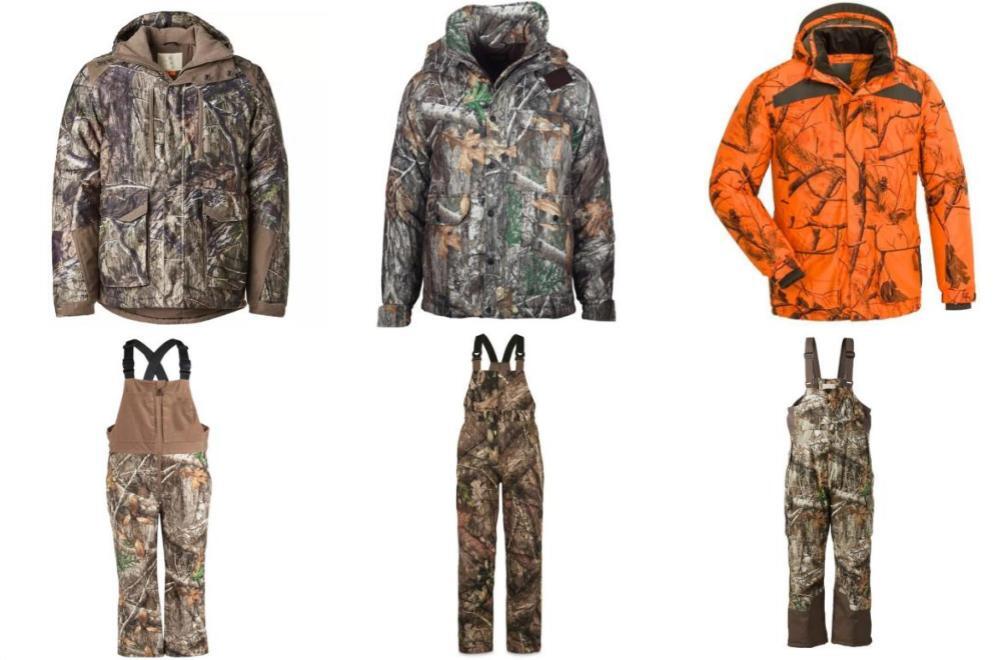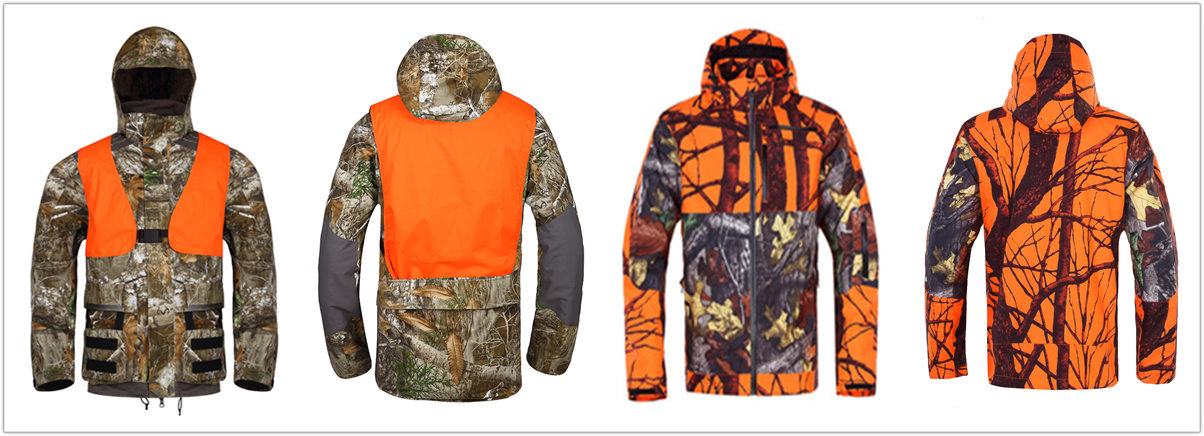Three years after the COVID-19 pandemic spread across the world, the hunting apparel industry is facing a global economic slowdown and weakening consumer demand in 2023, which has had a ripple effect on the retail supply chain, with stores closing and unemployment rising and sales stagnating, but 2023 is still a year full of challenges and opportunities for the global hunting apparel industry.
First, the hunting apparel industry is a buyer-driven industry, which means the trade volume and output of the industry will be affected by the macroeconomic environment. Amid rising inflation, rising energy costs and tightening global supply chains, the World Bank and the International Monetary Fund (IMF), among other major international economic institutions, are predicting a sustained slowdown in global growth through 2023. Similarly, the World Trade Organisation forecasts that world trade in goods will grow by about 1 per cent in 2023, down from 3.5 per cent in 2022. Global clothing trade is estimated to grow by a modest 0.8% to 1.5% in the New Year, reaching its lowest level since 2021. On the other hand, a drop in demand could help ease some of the problems facing fashion companies in the New Year, such as rising sourcing costs.
Second, fashion brands and retailers are likely to respond to volatile market conditions by continuing to diversify sourcing sources and strengthening relationships with key suppliers. According to the Fashion Industry Association of America’s (USFIA) 2022 Fashion Industry Benchmark Study, nearly 40% of U.S. apparel buyers surveyed plan to source from different national markets and work with different suppliers by 2024. Notably, “Improving flexibility and reducing resource risk”, “reducing sourcing volume from China” and “exploring nearshore sourcing opportunities” are the main driving forces for U.S. apparel buyers’ sourcing diversification strategy. At the same time, U.S. apparel buyers will constantly optimize their supplier base, and it will not be common to work with “fewer suppliers” in the future. For example, hunting apparel companies increasingly prefer to work with so-called “super suppliers” — those with multinational manufacturing capabilities or the ability to produce textiles and clothing vertically — to achieve flexibility and agility in sourcing. As more apparel buyers recognize the value of a “vendor-centric” business strategy, we can also expect to see a more balanced relationship between suppliers and importers in the New Year.

Third, the importance of sustainable sourcing and the use of sustainable textile materials will be highlighted in the coming year. On the one hand, with stakeholders’ expectations rising, fashion companies will make more efforts to develop more sustainable, socially responsible and transparent clothing supply chains, driven by new regulations. For example, more and more clothing buyers and retailers have voluntarily begun to release information about their suppliers to the public, such as factory names, locations, production functions and compliance records. In addition, new traceability technology and closer collaboration with suppliers will allow them to better understand the raw material suppliers they are dealing with than in the past. It is worth noting that rich supplier data will provide important support for apparel purchasers to optimize the existing supply chain and improve operational efficiency. On the other hand, as consumers become more interested in sustainability in the fashion industry, apparel companies will be able to cater to the growing demand for such eco-friendly clothing. New research shows that purchasing hunting clothing made from recycled textile materials can not only have a positive environmental impact, but also help hunting clothing companies reap commercial benefits. In the US retail market, a large proportion of such products are “made in the USA” or come from emerging sourcing markets in Africa, such as Tunisia and Morocco. For Chinese suppliers, increasing their production capacity in such garments may further retain funds from buyers when they “move” their sources back. Related to environment-friendly clothing, we are also likely to see more extensive support for fashion companies from trade policies such as tariff concessions in the future. At the same time, clothing buyers are likely to further explore “supply chain nearshore” strategies in 2023, driven by various economic and non-economic factors. They will also need to pay more attention to the impact of existing free trade agreements and their specific mechanisms on their purchasing practices.

Fourth, what problems will China’s textile and garment industry face in 2023?
- China’s garment industry has experienced decades of rapid development, which covers up problems such as neglect of product design and development and neglect of deep integration of supply chain. The core change of China’s textile and garment industry is to rise from made in China to created in China. The adjustment faced by the garment industry under the “new normal” is good for the long-term development of China’s garment industry and forces the comprehensive upgrading of Chinese garment brands from products, brands to channel operation capabilities.
- Enterprises should realize that they should return to the enterprise, products and ingenuity, and strive to provide consumers with cost-effective products in order to win the market. At present, e-commerce still has opportunities for garment enterprises. The entry of international first-line brands and the upgrading of online products are also changing the stereotype of e-commerce in the eyes of people in the past. For enterprises that want to expand sales channels, e-commerce is an important port that cannot be ignored. In the digital age, enterprises need to change their cognitive logic, strategic logic, and management logic to better meet the opportunities.
From single profit to ecological profit. Today, consumers are no longer shopping just for the product function itself, but for the needs that are met behind the product. The function of clothing for consumers is no longer to cover the body and keep warm, but to make consumers beautiful as a “tool”, is a symbol of identity, is a symbol of image.
- In the future, the garment industry should not only sell products, but also know how to sell customers’ lifestyles. Through product mix, from a single product profit to create a concentric and diversified ecological profit. Traffic will be the key to the survival of this era. The change of traffic is due to the change of people’s lifestyle. With the development of mobile Internet, consumers’ consumption behavior has been transferred from offline to online. Everyone has a cell phone, and they spend all their time on it. Can not go shopping, but can not do without mobile phone, this is the status quo. See the flow of the key, rooted down. Offline recession will be online spring at the same time, enterprises should consider the future form of sales, try to taste multi-direction, multi-form sales channels.
Three years of epidemic is a reshuffle, this is a good time to focus on the development of core competitiveness. Because very small and some big brands out of rhythm will be washed out, the pattern of the clothing industry will change greatly, which is a once-in-a-lifetime business opportunity. So the pandemic is also a good consolidation opportunity for us. For us, on the one hand, we should first open up the channels, on the other hand, the most important thing for traditional enterprises is the product. During this period, we can just pay attention to the product research and development, and do a good job in product quality and product research and development Strategy shifts from competitive logic to symbiotic logic.
In the digital age, it is important to create customer value and gain more room to grow through cooperation rather than competition. The key to “what you want to do” is whether you can redefine it; “What you can do” depends on who you connect to, not what resources you have. If you can connect, there are a lot of resources and possibilities; “What can be done” is no longer limited by industry conditions, to do cross-border cooperation. If we can’t change our minds and open our boundaries, we can’t really solve the fundamental problems.
The greatest danger in turbulent times is not the turbulence itself, but the logic of the past. In 2023, Taian Bowins Clothing Co., Ltd. will continue to serve customers with heart, with sentiment service, with wisdom service.




